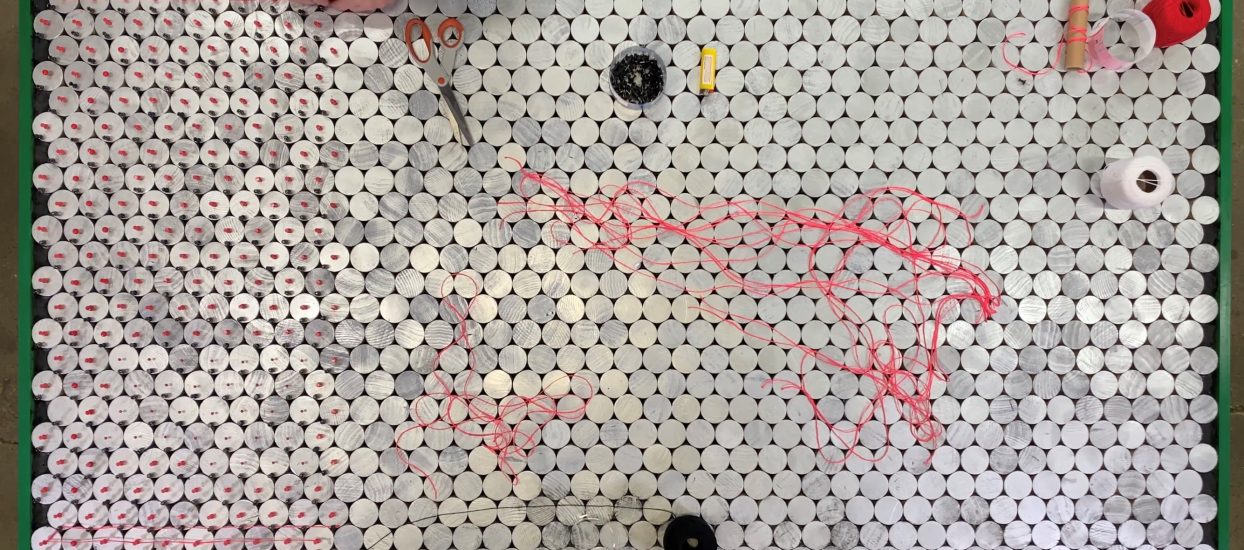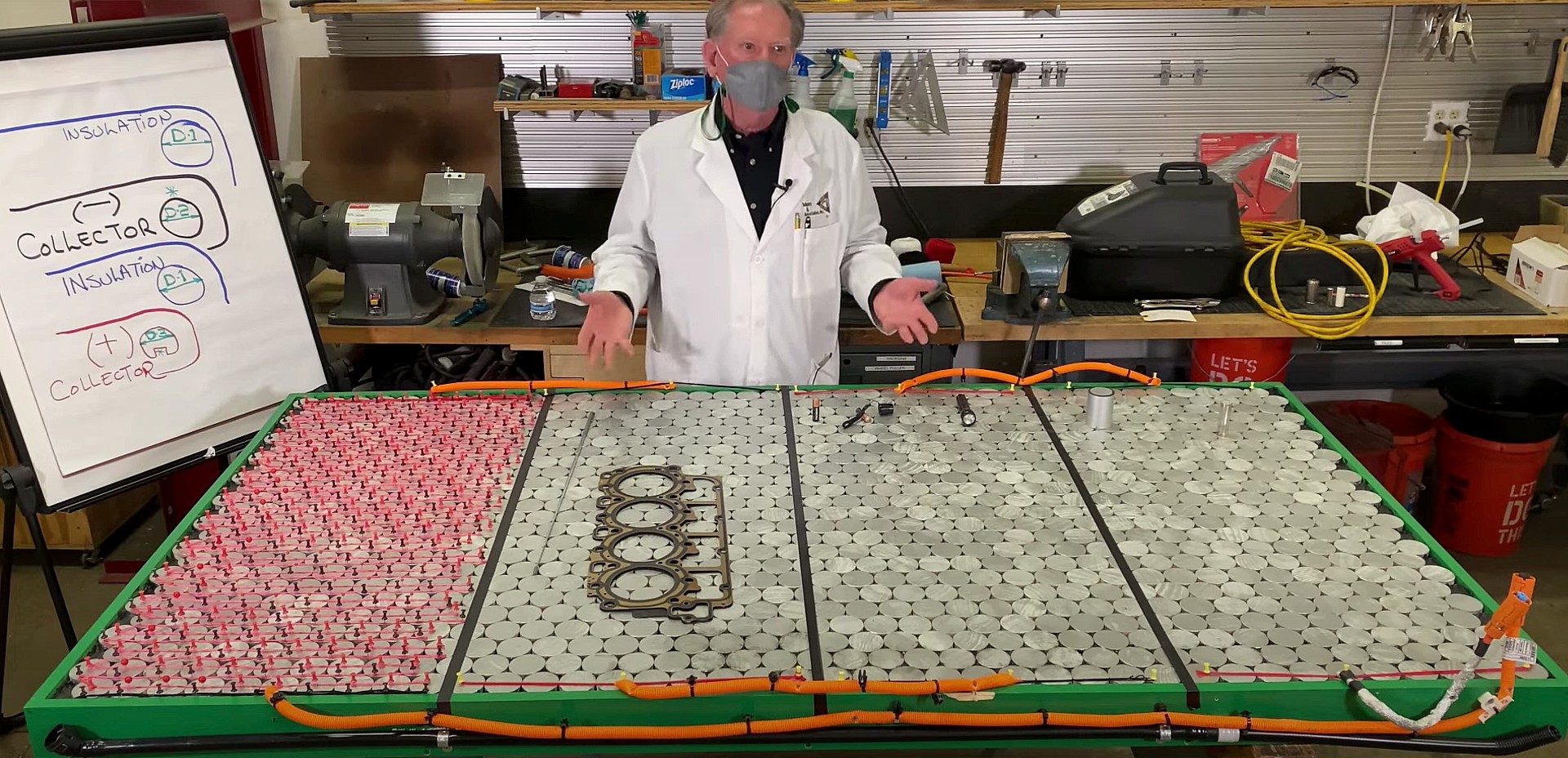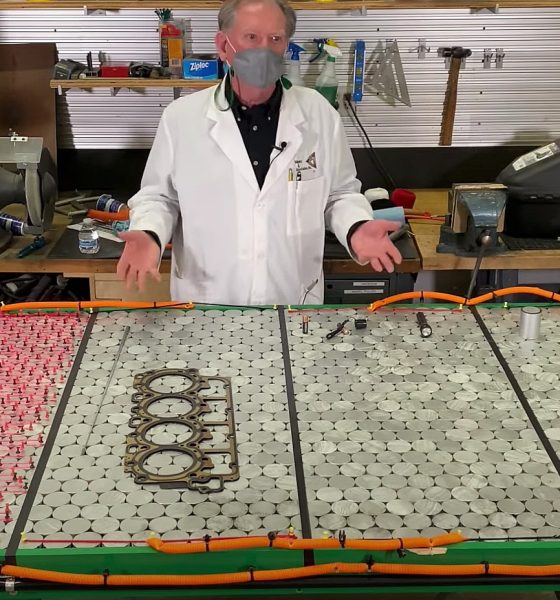Tesla teardown expert Sandy Munro recently recreated what he believes will be the new 4680 Battery Pack by recreating the cell housing unit for a new video. Munro is an extremely familiar figure to Tesla fans as he spent some time breaking down both the Model 3 sedan and, more recently, the Model Y crossover. However, the design expert, along with his team of highly-qualified engineers, composed a copy of the 4680 cell pack, which will be used in future Tesla models to increase power, energy, and range.
Munro admits that this may not be exactly what Tesla will use in its future vehicles, but this could likely be extremely similar to what the electric automaker will introduce. For those that aren’t familiar, the Model 3 and Model Y previously used Tesla’s 2170 cells, which were able to provide superior performance compared to the 18650 cells that were used in the Model S and Model X. However, the electric automaker had been working with Jeff Dahn and other researchers at Dalhousie University in Canada to develop new, revolutionary cells that would provide longer lifespans with more power and more energy.
Interestingly, these cells with higher performance would dramatically decrease Tesla’s cars’ cost, as the materials they used would be easier to obtain and cheaper to produce. Creating a more efficient and cost-effective battery cell was the main strategy in having Tesla’s vehicles comparable with gas cars in terms of cost.
Credit: Munro and Associates
Tesla uses 4,416 2170 cells in the Model Y, but this number is significantly lower with the 4680 cells due to their larger size, which carries significantly more energy and power than the previous cell. Munro states that only 960 cells will be used in the new battery pack, and with the increases in range, power, and energy, Tesla is truly onto something remarkable that will only increase their lead in the EV sector.
“We are focusing our attention on this, which is so much better than what they had with the 2170,” Munro said.
Tesla rolled out the new 4680 cell at its highly-anticipated Battery Day event on September 22nd. CEO Elon Musk summarized Tesla’s plan to begin building a more affordable battery cell, ultimately leading to a more affordable vehicle. In summation, Tesla plans to decrease the cost of cell manufacturing by a significant amount and decrease the cost of money per kilowatt-hour by up to 56% through design, production efficiencies, and material sourcing.
One of Tesla’s biggest advantages in designing its own cells and packs is that it can significantly reduce costs while also increasing the ability to fix issues when they occur. One of the strategies with its battery cells from the very beginning was to individualize each cell so it was easier be traced and replaced if any issues were to occur. Teslarati covered a recent replacement of a Model S battery cell showed the process for fixing a pack when a cell goes awry.
The new 4680 cells have been used for several months, Elon Musk said in an interview earlier this year. However, not all vehicles utilize the new cells as the Kato Road cell production facility near Tesla’s Fremont factory is not producing enough yet. However, the increased production will eventually lead to Tesla using the 4680 batteries exclusively within its cars, which will lead to higher range ratings and increased performance specs, making Tesla’s EVs even more superior to its competitors.
Munro’s full 4680 pack breakdown is available below.

News
Tesla FSD fleet is nearing 7 billion total miles, including 2.5 billion city miles
As can be seen on Tesla’s official FSD webpage, vehicles equipped with the system have now navigated over 6.99 billion miles.

Tesla’s Full Self-Driving (Supervised) fleet is closing in on almost 7 billion total miles driven, as per data posted by the company on its official FSD webpage.
These figures hint at the massive scale of data fueling Tesla’s rapid FSD improvements, which have been quite notable as of late.
FSD mileage milestones
As can be seen on Tesla’s official FSD webpage, vehicles equipped with the system have now navigated over 6.99 billion miles. Tesla owner and avid FSD tester Whole Mars Catalog also shared a screenshot indicating that from the nearly 7 billion miles traveled by the FSD fleet, more than 2.5 billion miles were driven inside cities.
City miles are particularly valuable for complex urban scenarios like unprotected turns, pedestrian interactions, and traffic lights. This is also the difference-maker for FSD, as only complex solutions, such as Waymo’s self-driving taxis, operate similarly on inner-city streets. And even then, incidents such as the San Francisco blackouts have proven challenging for sensor-rich vehicles like Waymos.
Tesla’s data edge
Tesla has a number of advantages in the autonomous vehicle sector, one of which is the size of its fleet and the number of vehicles training FSD on real-world roads. Tesla’s nearly 7 billion FSD miles then allow the company to roll out updates that make its vehicles behave like they are being driven by experienced drivers, even if they are operating on their own.
So notable are Tesla’s improvements to FSD that NVIDIA Director of Robotics Jim Fan, after experiencing FSD v14, noted that the system is the first AI that passes what he described as a “Physical Turing Test.”
“Despite knowing exactly how robot learning works, I still find it magical watching the steering wheel turn by itself. First it feels surreal, next it becomes routine. Then, like the smartphone, taking it away actively hurts. This is how humanity gets rewired and glued to god-like technologies,” Fan wrote in a post on X.
News
Tesla starts showing how FSD will change lives in Europe
Local officials tested the system on narrow country roads and were impressed by FSD’s smooth, human-like driving, with some calling the service a game-changer for everyday life in areas that are far from urban centers.

Tesla has launched Europe’s first public shuttle service using Full Self-Driving (Supervised) in the rural Eifelkreis Bitburg-Prüm region of Germany, demonstrating how the technology can restore independence and mobility for people who struggle with limited transport options.
Local officials tested the system on narrow country roads and were impressed by FSD’s smooth, human-like driving, with some calling the service a game-changer for everyday life in areas that are far from urban centers.
Officials see real impact on rural residents
Arzfeld Mayor Johannes Kuhl and District Administrator Andreas Kruppert personally tested the Tesla shuttle service. This allowed them to see just how well FSD navigated winding lanes and rural roads confidently. Kruppert said, “Autonomous driving sounds like science fiction to many, but we simply see here that it works totally well in rural regions too.” Kuhl, for his part, also noted that FSD “feels like a very experienced driver.”
The pilot complements the area’s “Citizen Bus” program, which provides on-demand rides for elderly residents who can no longer drive themselves. Tesla Europe shared a video of a demonstration of the service, highlighting how FSD gives people their freedom back, even in places where public transport is not as prevalent.
What the Ministry for Economic Affairs and Transport says
Rhineland-Palatinate’s Minister Daniela Schmitt supported the project, praising the collaboration that made this “first of its kind in Europe” possible. As per the ministry, the rural rollout for the service shows FSD’s potential beyond major cities, and it delivers tangible benefits like grocery runs, doctor visits, and social connections for isolated residents.
“Reliable and flexible mobility is especially vital in rural areas. With the launch of a shuttle service using self-driving vehicles (FSD supervised) by Tesla in the Eifelkreis Bitburg-Prüm, an innovative pilot project is now getting underway that complements local community bus services. It is the first project of its kind in Europe.
“The result is a real gain for rural mobility: greater accessibility, more flexibility and tangible benefits for everyday life. A strong signal for innovation, cooperation and future-oriented mobility beyond urban centers,” the ministry wrote in a LinkedIn post.
News
Tesla China quietly posts Robotaxi-related job listing
Tesla China is currently seeking a Low Voltage Electrical Engineer to work on circuit board design for the company’s autonomous vehicles.

Tesla has posted a new job listing in Shanghai explicitly tied to its Robotaxi program, fueling speculation that the company is preparing to launch its dedicated autonomous ride-hailing service in China.
As noted in the listing, Tesla China is currently seeking a Low Voltage Electrical Engineer to work on circuit board design for the company’s autonomous vehicles.
Robotaxi-specific role
The listing, which was shared on social media platform X by industry watcher @tslaming, suggested that Tesla China is looking to fill the role urgently. The job listing itself specifically mentions that the person hired for the role will be working on the Low Voltage Hardware team, which would design the circuit boards that would serve as the nervous system of the Robotaxi.
Key tasks for the role, as indicated in the job listing, include collaboration with PCB layout, firmware, mechanical, program management, and validation teams, among other responsibilities. The role is based in Shanghai.
China Robotaxi launch
China represents a massive potential market for robotaxis, with its dense urban centers and supportive policies in select cities. Tesla has limited permission to roll out FSD in the country, though despite this, its vehicles have been hailed as among the best in the market when it comes to autonomous features. So far, at least, it appears that China supports Tesla’s FSD and Robotaxi rollout.
This was hinted at in November, when Tesla brought the Cybercab to the 8th China International Import Expo (CIIE) in Shanghai, marking the first time that the autonomous two-seater was brought to the Asia-Pacific region. The vehicle, despite not having a release date in China, received a significant amount of interest among the event’s attendees.










